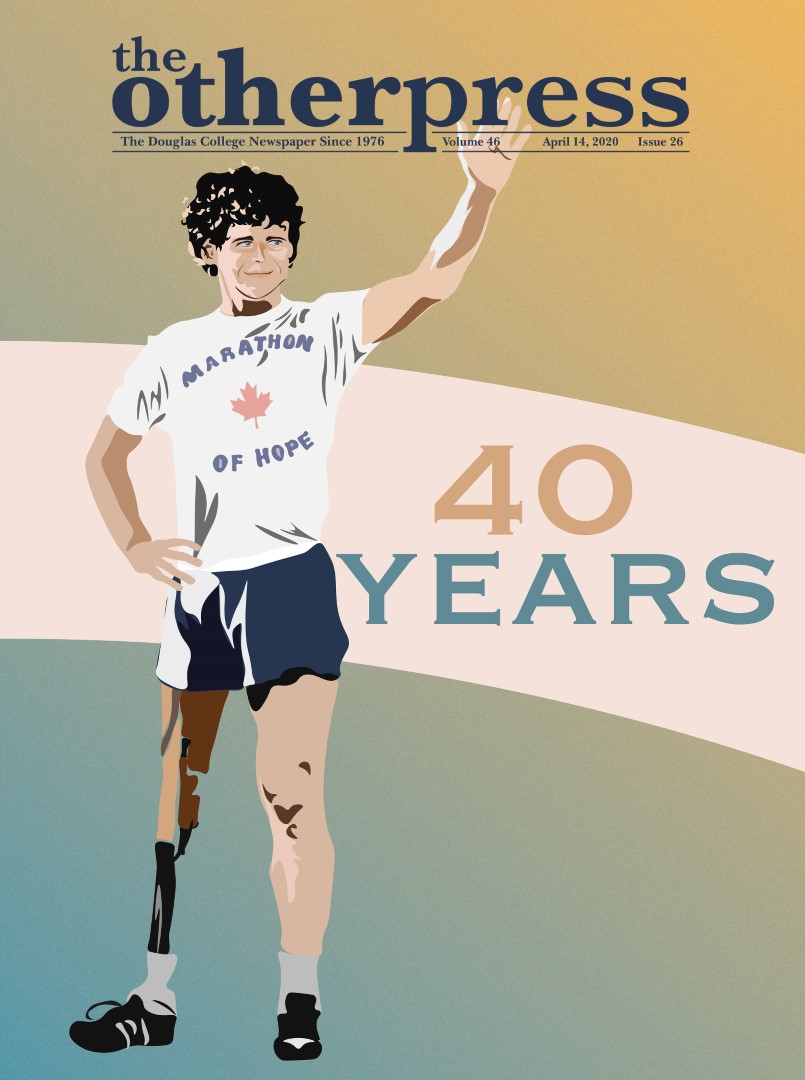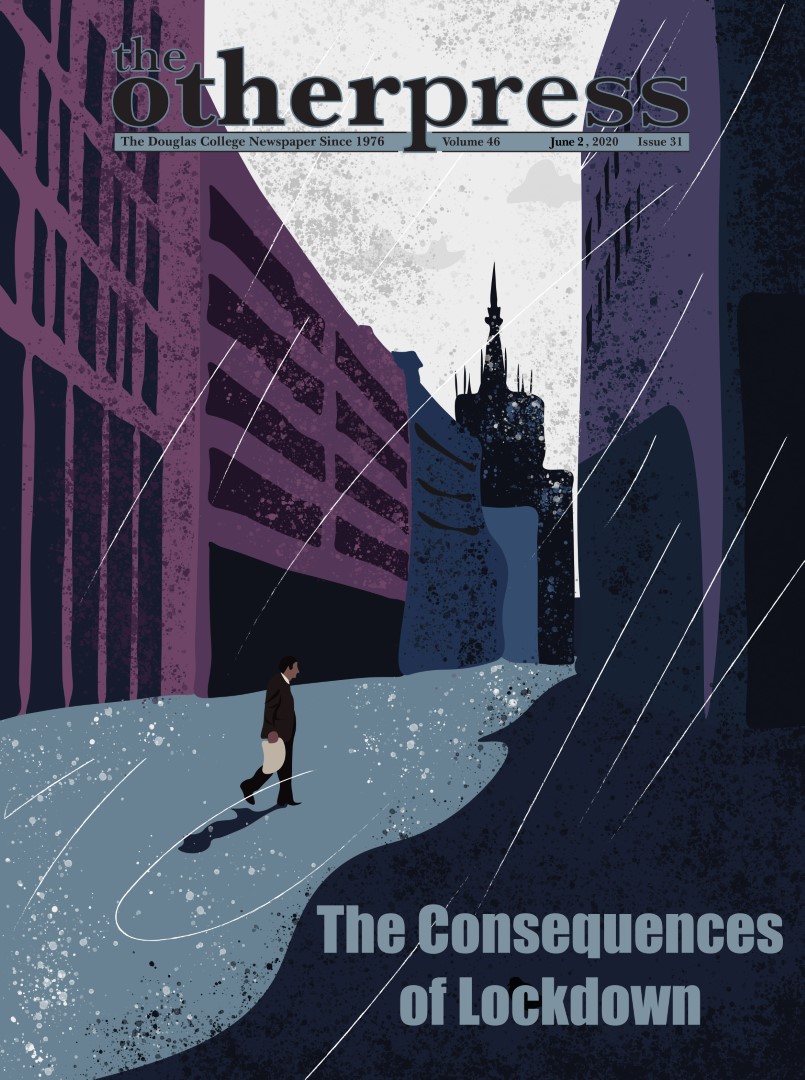
The Marathon of Hope, 40 years later
By Brandon Yip, Contributor
Terry Fox had a dream to run across Canada to raise money for cancer research. His dream was doubted by many—including his family. But whatever challenges he was faced with, his mental strength pushed him to hyper focus on achieving his goals. He would succeed no matter what. Fox spoke about his resolve during a 1980 television interview for the program Real People: “I always say to people and it’s true. You can take my other leg away and I’d probably be even tougher than I am right now with one.”
The origin story
He was born in Winnipeg on July 28, 1958, to parents Rolland and Betty. His siblings include oldest brother Fred, younger brother Darrell, and younger sister Judith. The family later moved to Port Coquitlam where Fox attended Port Coquitlam Secondary School (which no longer exists). After high school, he attended Simon Fraser University studying kinesiology from 1976 to 1979.
In March 1977, at age 18, Fox was diagnosed with osteogenic sarcoma—also known as bone cancer. His right leg was later amputated 15 cm above the knee. The night before his operation, Fox was given a copy of Runner’s World magazine by his high school coach, Terri Fleming. The publication featured Dick Traum, an amputee who ran in the New York City Marathon in October 1976. Traum’s story provided a source of inspiration for Fox. But in the 2005 documentary, Terry Fox Remembered, Traum would disclose that when he met Fox’s mother years later, she told the truth of how Fox really felt about the marathon runner. Traum recited Betty’s story: “her story is that [Terry] sees this picture of me and he looks at it and he says, ‘If this old guy can run a marathon, I could run one every day!’” This truly reveals his competitive nature and spirit.
After his operation, Fox would have follow-up treatments for 16 months. During his treatment, the suffering he witnessed at the cancer ward would have a profound effect on him. “Kids my age and younger, and you just can’t leave something like that and forget it,” Fox said in a 1980 television interview with the CBC. In February 1979, Fox began training for the “Marathon of Hope” run, accumulating over 5,000 km (3,107 miles) in running distance.
The Marathon of Hope began on April 12 1980, with Fox dipping his right leg into the Atlantic Ocean near St. John’s, Newfoundland. He was accompanied by his best friend, Doug Alward—the driver of their van. The run had very little publicity in the beginning. But when Fox entered Ontario, there were more public appearances that generated more media coverage; people had now become aware of the courageous young man from Port Coquitlam. But on the first day of September in 1980, after running 18 miles, Fox began coughing and complained of chest pain. He saw a doctor and it was discovered that cancer had now spread to his lungs. He was forced to end the Marathon of Hope outside Thunder Bay after 143 days and having run 5,373 km (3,339 miles).
In the face of death
Shortly after arriving back in Vancouver, Fox held a press conference at Royal Columbian Hospital—where he would begin chemotherapy treatment. Fox was asked by a reporter if he felt bitter, and remarkably Fox refused to be angry about his fate.
“No, I don’t feel bitter. I’m not surprised by anything anymore. This is the way life is. I’m not the only one who is in this situation. There are a lot of people in worse situations […] I’m not bitter at anybody.” On September 18, 1980, Fox became the youngest recipient of the Companion of the Order of Canada. The ceremony was held at City Hall in Port Coquitlam. Fox died at Royal Columbian Hospital on June 28, 1981, with his family at his side. He was 22 years old.
Remembering Terry and continuing his legacy
Fred Fox, manager for Support Relations at the Terry Fox Foundation, says he is proud to be carrying on his brother’s memory. “It’s Terry’s selflessness, his determination, the never give up attitude that Terry displayed,” Fox said in an email interview with the Other Press. “In 1980 and still today, people recognize Terry’s honesty and integrity, that what he was doing was for all of the right reasons. It’s the next generations that continue to see Terry as an example that you don’t need to be the best. Terry would say he was just average, but hard work helps you achieve your goals.”
Steve Hanson, head coach for the SFU men’s basketball team, says Fox’s legacy remains a significant part of their basketball program. The team has dedicated a locker stall in their team room in Terry’s honour, as a reminder of his strong work ethic and determination. Another reminder is Fox’s number 4 jersey which is retired and inside the gym the team practices in everyday. “So, I feel it is my job to keep Terry’s legacy at SFU alive and talk about his inspiring story in relation to basketball,” Hanson said in an email interview with the Other Press. “If any student-athlete in my program does not know his story, I have not done my job. We have many things named after Terry Fox at SFU, but it is more important to share the ‘why’ he started the Marathon of Hope and telling our students that he was the same age.”
Jay Triano is a former Canadian men’s national basketball player and former SFU player (from 1977 to 1981). He became friends with Terry Fox at SFU as students. Today, Triano is an assistant coach with the Charlotte Hornets of the NBA, and he reflects on his friendship with Fox. “As you know, Terry was a friend of mine, but more importantly he was an inspiration for generations of Canadians,” Triano said in an email interview with the Other Press. “A true hero, who I was able to watch as he transformed from a regular student athlete to becoming one of the greatest Canadians of all time. […] His drive, motivation and caring for others still motivates me to this day, and I know he has had the same affect on others. I was just lucky enough to be friends with him and watch him become a hero and one of the greatest Canadians of all time.”
Rick Hansen, Founder of the Rick Hansen Foundation, says Terry Fox also inspired him as a prominent advocate for people with disabilities. “He was indirectly shifting attitudes from pity and limitation to respect, ability, and potential,” Hansen said in an interview with the Other Press. “This became a motivating and inspiring factor for me as I considered my long-time dream of wheeling around the world. My goal was to demonstrate and create awareness of the potential of people with disabilities, to help remove barriers and to make the world accessible and inclusive. Terry and his story remind us all that people who have varying disabilities are people first.”
A statement from the Prime Minister
Prime Minister, Justin Trudeau, states Canadians should never forget what Terry Fox accomplished. “40 years ago, Terry Fox ignited a movement of hope across Canada,” Trudeau said in an email statement to the Other Press. “His determination and perseverance showed Canadians that there are no limits to what anyone can do and inspired so many to help fight the disease that took his life and has taken the lives of far too many. […] I encourage all Canadians to do their part in Terry’s name, so we can continue what he started.” At present, over $750 million has been raised worldwide for cancer research in Terry’s name through the annual Terry Fox Run which is held in numerous countries worldwide. In the end, Fox remained humble as the Marathon of Hope was never about him. Speaking with reporters after receiving the Companion of the Order of Canada, Fox reflected on his marathon and uniting the country during that memorable summer of 1980. “I’ve always demanded a lot from myself and expected a lot,” Fox said. “When I ran across Canada, [or] attempted to, the attitude I had in doing my very best was something I’ve always done. And to me, it wasn’t a special thing because I knew the effort I was putting in. That’s why it’s hard for me to understand how I could be a hero.”

